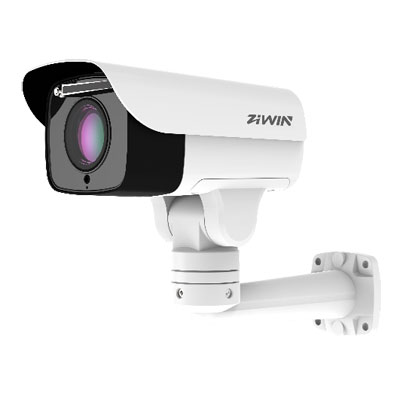
The negative tilt angle (i.e., the downward tilt of the camera) plays a unique and important role in security surveillance PTZ cameras, especially in specific scenarios and applications. Below are the main functions of the negative tilt angle:
Function: The negative tilt angle allows the camera to tilt downward, focusing on low-level targets such as pedestrians, vehicles, and entrances.
Application Scenarios: Suitable for ground security, parking lots, stairwells, underground passages, and other areas requiring attention to low-level activities.
Function: When cameras are installed at high positions, the negative tilt angle can prevent blind spots on the ground caused by excessive installation height.
Application Scenarios: Suitable for monitoring from high-rise buildings, towers, and streetlight poles.
Function: The negative tilt angle can be used to monitor slopes, sunken areas, or low-lying terrains, ensuring complete coverage of these special landscapes.
Application Scenarios: Suitable for mountainous areas, tunnels, underground garages, and other complex terrains.
Function: By adjusting the negative tilt angle, the camera can avoid capturing unnecessary areas (such as windows of adjacent buildings or private spaces), thereby protecting privacy.
Application Scenarios: Suitable for residential and commercial areas where both security and privacy need to be considered.
Function: In automatic tracking systems, the negative tilt angle helps the camera track low-level moving targets, such as pedestrians, vehicles, or animals.
Application Scenarios: Suitable for intelligent traffic monitoring, perimeter protection, and other scenarios requiring dynamic tracking.
Function: Adjusting the negative tilt angle can prevent excessive sky or high background in the frame, reduce light interference (e.g., backlighting), and enhance image clarity.
Application Scenarios: Suitable for outdoor monitoring, especially in strong light environments.
Function: In multi-camera systems, the negative tilt angle can coordinate with other cameras to achieve comprehensive, blind-spot-free coverage.
Application Scenarios: Suitable for large campuses, airports, train stations, and other places requiring multi-angle monitoring.
Function: The negative tilt angle can be used to monitor low-level potential threats, such as climbing intrusions or low-altitude drones.
Application Scenarios: Suitable for high-security locations like prisons, military facilities, and critical infrastructure.
The role of the negative tilt angle in security surveillance PTZ cameras is mainly reflected in monitoring low-level targets, reducing blind spots, adapting to special terrains, protecting privacy, optimizing image quality, and meeting special security needs. It is an essential function for achieving comprehensive, multi-level monitoring, especially in complex scenarios and high-security locations.